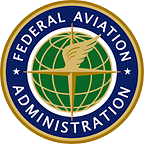The 800th Space Operation: Safety is Key to Success of Commercial Space Industry
The FAA recently surpassed the 800th licensed commercial space operation.
By Kelvin B. Coleman, Associate Administrator for Commercial Space Transportation, Federal Aviation Administration
Recently, we surpassed the 800th time that a commercial space operation authorized by the FAA traveled to or back from space.
We’ve come a long way since the first time, in 1989, when a company called Space Services Inc. launched a three-ton rocket known as Starfire One to a height of 198 miles above Earth on a seven-minute operation that aimed to learn about weightlessness, plastic and powdered metals.
Space transportation services operated by private companies are now used multiple times a week, emerging as an increasingly reliable and affordable ride for civil, military, international and private customers to carry out the boundless promise of scientific discovery and security goals.
As a regulator, the FAA understands that the success of this industry has been directly tied to its safety record — no member of the public has ever been lost or seriously injured from an FAA-authorized launch or reentry operation.
Maintaining that safety record is a key to the uninterrupted growth of this industry that has become an important economic engine for our nation. -Kelvin B. Coleman
By fiscal year 2028, we are forecasting nearly triple the fiscal year 2023 number of authorized operations due to greater use of reusable vehicles, the demand for commercial satellite services and the growth of commercial human spaceflight missions. To meet this expected growth, we are implementing the licensing rule known as Part 450, the performance-based system with multiple flexibilities, and are working with operators to enhance the efficiency of license determinations.
By March 2026, all commercial space launch and reentry operators must have a license issued under the new Part 450. To assist the legacy license holders, the FAA is providing guidance through advisory circulars, virtual tutorials, workshops and more. Companies that have not started using Part 450, are encouraged to do so well before the deadline.
Make no mistake, the burden of compliance for safety in Part 450 and other regulations rests with the operator. The FAA can and will make license determinations swiftly. New methodologies will take more time to assess at first, but we’re open to innovative methods as long as they are supported by appropriate levels of information we can verify and validate.
The mission of the FAA’s Office of Commercial Space Transportation is to enable safe commercial space transportation. That responsibility includes protecting public health and safety, safeguarding property and defending the national security and foreign policy interests of the United States.
To fulfill those mandates, we have been laying the foundation to ensure the agency can meet the evolving needs of the industry. We’re doing that by increasing our resources as well as revising and fortifying our policies, regulations, tools and procedures.
Our dedicated and knowledgeable staff is growing to meet swelling demand for licenses, inspections and other services. We have already surpassed the record number of FAA-licensed launch and reentry operations in fiscal year 2023 with two months still to go in fiscal year 2024.
While partnering to keep our compass always pointed to safety, together we eagerly anticipate new vehicles and uses of space that exemplify American innovation and hold the potential to achieve our greatest aspirations.
Timeline of Commercial Space Transportation
- March 29, 1989: The Office of Commercial Space Transportation licensed the first suborbital launch operation when Space Service, Inc., sent a scientific payload on a suborbital operation aboard a Starfire rocket.
- September 8, 1998: The FAA authorized the 100th commercial operation. McDonnell Douglas Corp. launched a Delta II rocket from Vandenberg Air Force Base carrying an Iridium payload to lower earth orbit.
- June 21, 2004: The FAA authorized the first human space flight operation, by Scaled Composites. Scaled Composites’ SpaceShipOne conducted the first privately flown and funded crewed spaceflight, piloted by Mike Melvill.
- November 22, 2010: The FAA authorized the first reentry vehicle license to SpaceX for its Dragon Reentry Capsule. First privately developed and operated spacecraft that is recovered from orbit. SpaceX conducted the successful reentry operation on December 8, 2010.
- December 18, 2021: The FAA authorized the 500th commercial operation (licensed or permitted launches plus licensed reentries) with the SpaceX Falcon 9 launch of the TurkSat-5B mission from Cape Canaveral Space Force Station.
- August 2, 2024: The 800th FAA authorized commercial space operation was the Rocket Lab launch from New Zealand of a constellation of satellites designed to deliver imagery that can detect millimeter-level changes to the Earth’s surface from space.
